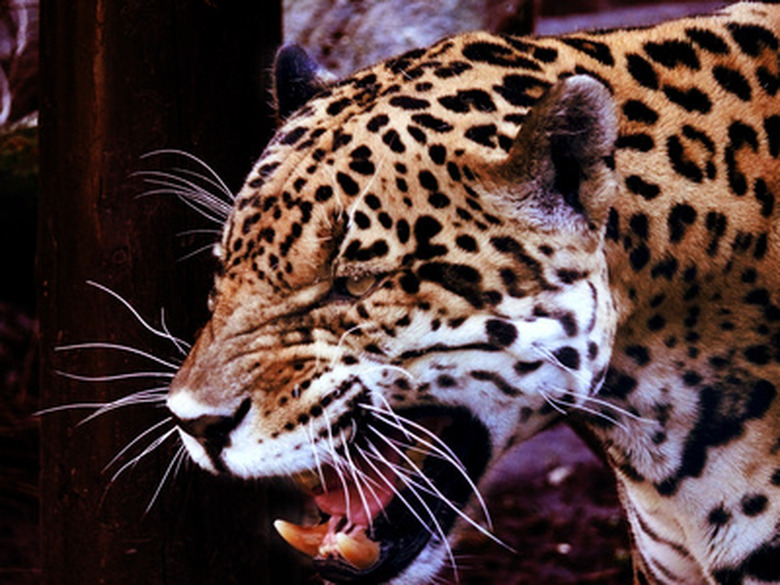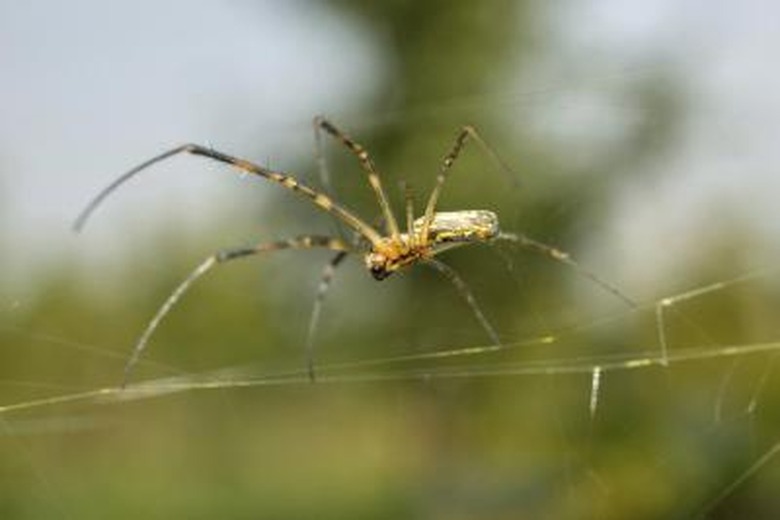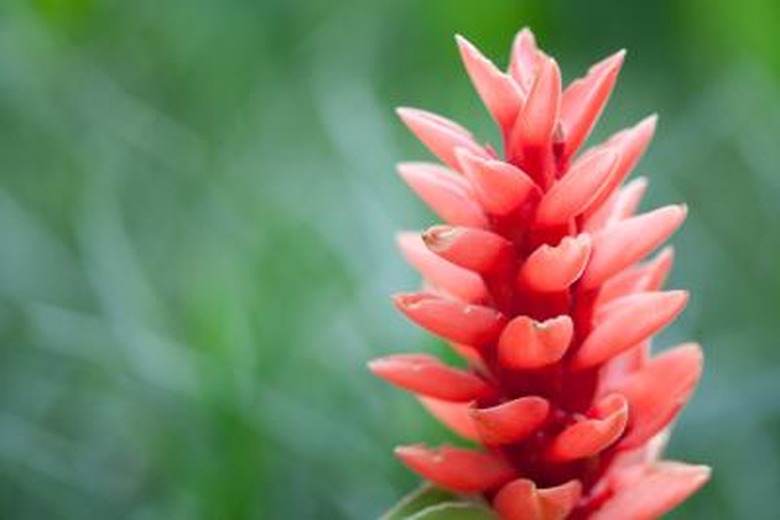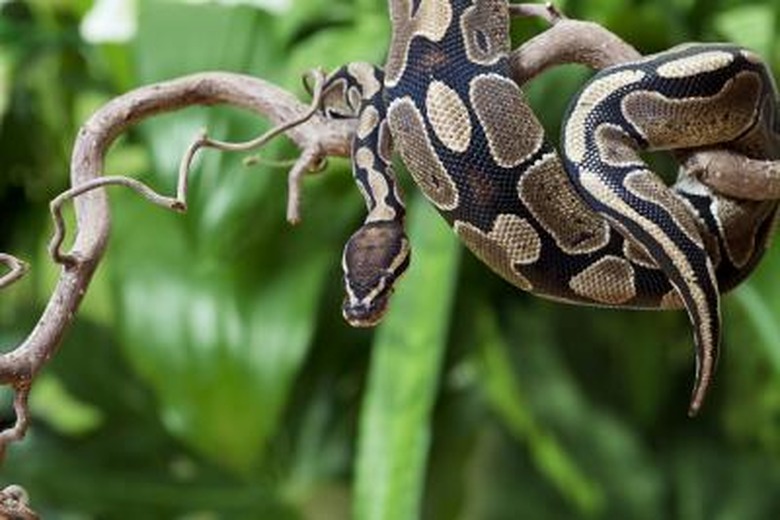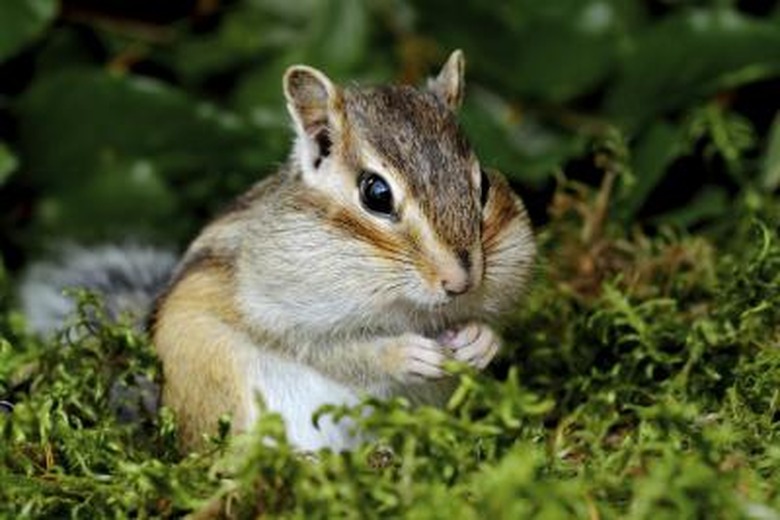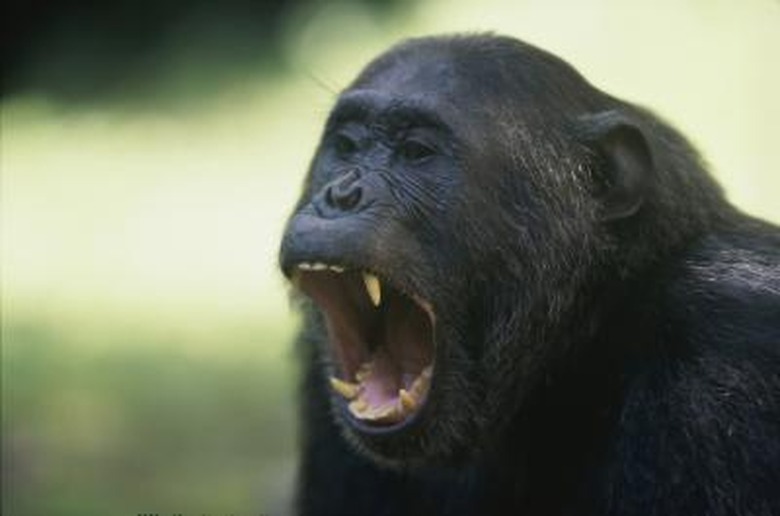Food Chain Of Animals In The Rain Forest
The rainforest is one of the best places on the planet to see the food chain in action. The jungle is home to gorgeous scenery and incredible biodiversity, but it's also a cutthroat fighting pit where millions of animals must compete for a limited amount of resources. Each species plays a critical role in the complex ecosystem, but an animal must be strong, healthy and fierce to make it to the top of the tropical rainforest food chain.
TL;DR (Too Long; Didn't Read)
The rainforest food chain includes levels like the primary and secondary consumers, such as monkeys, ocelots and birds of prey, as well as the apex predators atop the chain, such as the jaguars, crocodiles and green anacondas.
Producers, Consumers and Decomposers
Producers, Consumers and Decomposers
The jungle food chain is broken into a handful of groups that describe a species' role in the overall rainforest ecosystem. Down at the ground level are the producers, such as the trees, shrubs and plants on which many rainforest animals depend on for food and shelter. Also down there are the decomposers, like mushrooms, termites and worms. They help break down waste materials into energy that other animals can use. Finally, the rainforest food web includes consumers, broken into the primary, secondary and tertiary categories. The primary consumers in the rainforest are often herbivores, such as monkeys, snakes and capybaras. Next are the secondary consumers, a group that often includes carnivores like ocelots, tapirs and birds of prey.
Apex Predators
Apex Predators
At the top of the rainforest food chain are the tertiary consumers, also known as the apex predators. They are the fiercest competitors in the rainforest and face far fewer threats than the more vulnerable primary and secondary consumers. But the top of the food chain isn't a peaceful place to be. Apex predators must stay vigilant, strong and healthy if they want to keep their top spot. In the Amazon rainforest food chain, these top spots are held by the big cats, crocodiles and the green anaconda.
Top of the Jungle Food Chain
Top of the Jungle Food Chain
Big cats like leopards and jaguars rely on their speed, agility and size to prey on smaller animals such as armadillos, birds, turtles and small monkeys. They hunt mostly at night and keep to themselves when they are not stalking and hunting their next meal.
Like any rainforest creature, the big cats face threats from humans. But they also must protect themselves from the green anaconda. One of the largest snakes in the world, the anaconda is known for its ability to stalk prey both underwater and on land. Unlike some snakes, green anacondas don't use venom to kill their victims. Instead, they snatch them with a giant bite. Then, they wrap their long anaconda body around the prey, crushing its bones and constricting its breath until it suffocates. The anaconda then swallows their victim whole. Often, that victim is an animal such as a capybara, wild pig or caiman, but anacondas have also been known to kill jaguars. A kill of that size keeps an anaconda fed for weeks.
Another apex predator is the rainforest crocodile. Thanks to a set of eyes, ears and nostrils on the top of its head, a crocodile is a formidable foe that can remain in shallow water for long periods of time completely undetected. Then, when the right moment comes, its victim barely has time to react before the powerful jaw of the crocodile snaps shut around them.
Primary and secondary consumers often don't stand a chance against the apex predators of the rainforest food chain. But big cats, green anacondas and crocodiles must all fight each other to stay atop the food chain, and have all fallen victim to each other at some point in the vicious world of the rainforest food web.
Cite This Article
MLA
Dragani, Rachelle. "Food Chain Of Animals In The Rain Forest" sciencing.com, https://www.sciencing.com/food-chain-animals-rain-forest-6733903/. 22 November 2019.
APA
Dragani, Rachelle. (2019, November 22). Food Chain Of Animals In The Rain Forest. sciencing.com. Retrieved from https://www.sciencing.com/food-chain-animals-rain-forest-6733903/
Chicago
Dragani, Rachelle. Food Chain Of Animals In The Rain Forest last modified March 24, 2022. https://www.sciencing.com/food-chain-animals-rain-forest-6733903/
